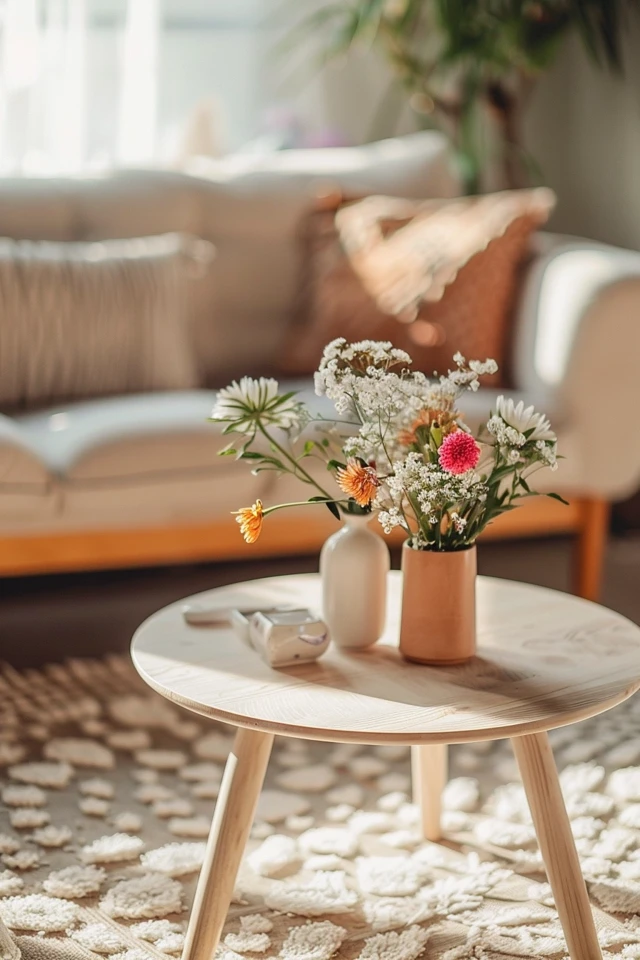Choosing the right paint color for your home can be a daunting task. It’s not just about picking a color you like; you also need to consider how it will look on your walls. We’ve all experienced the disappointment of a color looking completely different once it’s applied. That’s why having a sampling strategy in place is crucial to finding the perfect paint color.
There are various techniques you can use to test paint colors before committing to a whole room makeover. These sampling strategies will help you make an informed decision and avoid any surprises once the paint is on the walls.
Key Takeaways:
- Sampling strategies are essential when choosing paint colors for your home.
- Factors like lighting, background color, and surroundings can affect how paint colors appear.
- Paint sample boards provide a better representation of how the color will look.
- Observing paint colors at different times of the day helps assess their appearance in various lighting conditions.
- Online paint testers can also be useful for visualizing different paint colors in your space.

Factors Affecting Paint Color Perception
When it comes to choosing the perfect paint color for your walls, it’s important to consider how various factors can impact how the color appears in your space. Lighting, background color, resolution, flooring, and surroundings all play a significant role in the way paint colors are perceived.
Lighting: The lighting in a paint store may differ from the lighting in your home, leading to variations in how the paint color looks. Natural daylight, incandescent lighting, fluorescent lighting, and LED lighting all have different color temperatures that can alter the appearance of paint colors. That’s why it’s essential to bring paint swatches home and observe them in your space under your lighting conditions.
Background Color: The existing wall color or background color can impact how a new paint color looks. Light colors tend to reflect more light and can make a room feel larger, while darker colors absorb light and create a more intimate atmosphere. Take note of the current wall color and consider how it may interact with the paint color you are considering.

Resolution: The resolution of a paint color chart or image on a screen can affect how accurately it represents the actual color. Low-resolution images may not capture the nuances or undertones of a color, leading to discrepancies when applied to your walls. It’s always best to view paint colors in person whenever possible.
Flooring: The type and color of flooring in a room can influence how a paint color appears. For example, light-colored flooring may reflect more light onto the walls, making a paint color appear brighter. Conversely, dark flooring can absorb light and make the paint color appear more muted. Consider the flooring in your space and how it may impact the overall color scheme.
Surroundings: The furnishings, decor, and surroundings in a room can also affect how paint colors are perceived. The colors and textures of furniture, artwork, and other elements in the space can interact with the paint color, creating visual harmony or contrast. Take into account the overall aesthetic of your room and how the paint color will complement or stand out against your surroundings.
By considering these various factors, you can make more informed decisions when choosing paint colors for your home. It’s important to see the colors in person, in different lighting conditions, and alongside your existing decor to ensure the best possible outcome.

Testing Paint Colors: Tips and Techniques
When it comes to selecting the perfect paint color for your walls, thorough testing is essential. Instead of applying the paint directly to the wall, consider painting sample boards. This method allows you to see how the paint color will appear on a surface similar to what you’ll be painting, without the fear of permanently marking the wall.
After painting the sample boards, be patient and allow the paint to fully dry. Keep in mind that the color and texture of the paint may change as it dries, so it’s important to wait for the final result before making a decision. By giving the paint enough time to dry, you can accurately assess the color and make a more informed choice.
Additionally, it’s crucial to observe the paint colors at different times of the day to gauge how they will look under various lighting conditions. Natural and artificial lighting can greatly affect the appearance of paint colors, making it important to consider how the colors will look both during daylight and at night. By examining the colors in different lighting situations, you can get a comprehensive understanding of how the paint will look in your space.
In today’s digital age, online paint testers can also be a valuable tool in the color testing process. Many paint manufacturers and home improvement websites offer virtual paint testers that allow you to upload a photo of your room and digitally apply different paint colors. While this method may not be as accurate as painting physical sample boards, it can provide a helpful visual representation of how the colors will look in your space.

